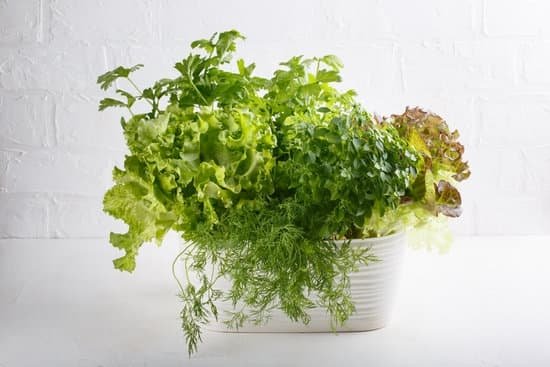Introduction – What is Container Gardening?
Container gardening is a type of gardening that uses pots, planters, and other containers to grow plants. Container gardens can be placed on balconies, patios, decks, and even window sills. Container gardens provide gardeners with the convenience of growing plants in a limited space or area. They are also perfect for those who are short on time as containers require less maintenance compared to traditional in-ground gardens.
Advantages
The biggest advantage of container gardening is its versatility. Plants grown in containers can be moved when necessary which enables you to create a constantly changing landscape. In addition, the size and shape of the container limits the amount of soil needed, thus reducing expenses associated with large volumes of soil. This makes it an ideal choice for those who don’t have much yard space or budget restrictions. Also, they allow gardeners to practice companion planting – the practice of placing different types of plants with compatible needs together in one container – making optimal use of small spaces while still providing variety.
Disadvantages
Containers have their drawbacks as well which include frequent waterings since the soil drys out quickly due to its nature and smaller volume; timely fertilization since nutrients quickly leaches out because there’s not much soil present; potential damage from temperature extremes as well as an increased susceptibility for disease due whether caused by fungus or insects; root development may be impeded depending on how deep and compact the reservoir is; and finally limited roots space makes scalability across plant species more difficult than traditional ground gardens.
Conclusion
Overall, despite potential drawbacks, growing plants in containers can provide you with excellent results if done properly and provides convenience compared to traditional ground based gardens. Thus, container gardening is definitely worth it for smaller spaces and cost restricted environments where conventional gardening methods would otherwise not be practical or reachable due to geographic limitations or lack of available land.
Types of Container Gardening
Container gardening can offer many benefits. Not only is it a fantastic way to add life and color to space-limited areas, but it also offers an opportunity to grow seasonal plants throughout the year, even in adverse weather conditions. Depending on the types of plants that you decide to grow, container gardening can even provide fresh fruits or vegetables.
When considering which type of container garden to cultivate, there are a few distinct types of setup to think about. Conversational gardening is great for individuals who want larger planters for growing large shrubs such as roses or perennials and bushes like rhododendrons or heathers. Surface top containers are ideal for balcony or patio gardens, providing aesthetic appeal as well as multiple plantings of flowers and foliage. Hanging baskets are perfect if you’re limited on floor space, allowing you to take advantage of normally unused vertical areas. Herb gardens tend to be popular too since they require more caretaking — watering regularly and pruning herbs before use can create wonderful edible harvests. Finally, window boxes provide plenty of options too, with low maintenance being an attractive benefit that many find hard to turn down.
Benefits of Container Gardening
Container gardening is worth it for many homeowners because it offers tremendous value. It may provide a way to grow plants that the home environment would otherwise not be able to sustain, such as those requiring more light or humidity than what the local climate can offer. Container gardening is also beneficial when space is limited, as pots and planters can be placed almost anywhere, including balconies and rooftops. There’s also a high level of flexibility with container gardening, making it possible for gardeners to move plants around according to changing needs. This could make even shady areas usable for growing vegetables or other plants in direct sunlight. Additionally, containers can help protect against soil-borne diseases that often are difficult to avoid in traditional gardens, reducing the costs of purchasing disease-resistant varieties of certain species. Container gardening may also save on regular maintenance tasks like weeding and harvesting since only those specific pots need attention rather than large open beds. Finally, containers typically represent a low-cost option in terms of materials compared to garden installation services.
What to Consider Before Gardening in Containers
Container gardening is an ideal option for those who are looking to green up their patio, balcony, or other outdoor spaces. But before you get started, here are some things to consider:
Size: The size of your container and the plants you plan on growing will play a big role in its success. Be sure to select containers that are large enough for proper root growth, as well as the amount of space to provide what each particular plant needs. For example, larger containers are typically better for vegetables, since they need more soil and space for roots.
Soil Type: Choosing the right soil type is critical when gardening in containers. Make sure your potting soil contains the correct levels of essential nutrients and water retention properties needed by your plants; otherwise they may be starved of key ingredients needed to grow successfully. It is also important to make sure any pre-mixed soils used are free of weed seeds and insects.
Drainage: Because of their limited growing space, container gardens often have difficulty with adequate drainage which causes moisture buildup and leads to root rot. To avoid this common problem, ensure your containers have more than one layer of drainage holes at the bottom so that excess water can drain out adequately.
Maintenance: Container gardens require frequent watering and regular fertilization through liquid or granule form depending on the plants’ needs. Weed management is also important as these can overtake the entire container garden in no time if not kept at bay regularly. Last but not least, keep an eye out for pests like aphids or slugs that may affect your crops’ health.
Overall, container gardening can be a great way to exercise your green thumb while adding beauty to whatever corner of outdoors you call home – but it’s important to weigh all factors before taking on such an undertaking!
Choosing The Right Containers for Your Garden
Container gardening is definitely worth it for those with limited space or who would like to get creative with their use of plants in their garden. The main challenge in container gardening is deciding which containers to use. Plastic containers are highly recommended as they will not be affected by moisture and can be easily cleaned, carry little weight, and are inexpensive. Terra cotta or ceramic pots may appeal to some homeowners because of the natural look, but require more maintenance since they need to be protected from harsh weather and temperatures. For people looking for a modern design, combination-materials such as wood-plastic or fiberglass resin may be ideal as they are lightweight and durable while still maintaining an attractive appearance. Finally, whether you choose clay, plastic, or a combination material container always make sure the pot has good drainage holes, enough soil to help retain moisture, as well as something that can identify what plant you’re growing inside it!
Considerations for Location and Climate
Container gardening is definitely worth it for those with limited outdoor space or challenging climate conditions. The main consideration for container gardening is location. Small spaces can be transformed with a few simple containers, and even large backyards could look great with larger planters. There are a wide variety of materials such as clay or ceramic that can be used to construct the vessel for your plants.
The second consideration when looking into container gardening is the climate you live in. Even in places with harsh climates, some hardier species may work well in containers and provide year-round color. For instance, lavender is an ideal choice for drier climates. While plants like hostas and ferns will do better in humid climates. Home gardeners should research the plants they choose to make sure they will thrive in their environment and growing conditions.
Care and Maintenance of Containers
Container gardening is an enjoyable and rewarding experience that can easily be made worth it with proper care. Once container plants are established, they require simple but regular maintenance to ensure good health and growth. This involves monitoring the soil moisture levels, nutrient levels, pests, disease, and general conditions of the plants. For example, to monitor soil moisture levels, simply insert your finger into the pot up to your knuckle for a quick read of how wet or dry the soil is. Also be sure to fertilize regularly following guidelines on the back of fertilizer packaging since containers tend to become depleted of nutrients faster than traditional in-ground garden beds due to their small size. Regular harvesting and occasional pruning (depending on what type of container plant it is) helps keep containers healthy as well by shedding dead or damaged parts from the plant and promoting new growth. Lastly, watch out for pest and disease and take proper steps when necessary to keep it away from your container plants. With proper care, observation, and routine maintenance any container gardener has all they need in developing beautiful and flourishing pots!
Tips for Plant Selection for Container Gardening
Container gardening can be a great way to add lots of vibrant plants and flowers to your outdoor space. With the right plant selection, you can enjoy beautiful blooms and lush foliage for many years. The best part about container gardening is that you don’t need a large area – containers can fit into even the most limited spaces.
When it comes to plant selection for your container garden, there are a few things to consider:
– Size: You’ll want to choose plants that fit well within the boundaries of your containers, as well as ones that don’t outgrow their environment too quickly. Container gardening can easily turn untidy looking if the participants don’t stay within limits!
– Soil & Drainage: Plants thrive in soil specifically tailored for them with good drainage. Check whether your chosen plants require soil moisture or dryness and adjust accordingly.
– Sun vs. Shade: Some plants love direct sunlight – others hate it! Make sure that you select plants suited to the amount of light available in the area where you plan on growing them. If you’re not sure, check with an expert gardener who may be able help match you with complementary options for each space.
To summarize, selecting plants for your container garden requires careful planning and preparation in order to ensure that they thrive in their new environment – but it is definitely worth the effort! Not only will you have more greenery around your home, but more importantly – you will bring beauty into your life every day.
Tips for Growing A Successful Container Garden
Container gardening is a great way to bring the beauty of plants and flowers into any outdoor space. With only a few pots, some soil and a bit of patience, anyone with limited time or space can create an amazing garden! While it may seem like a lot of work up front, container gardening is worth the effort in the end. Not only does it provide beautiful blooms and foliage, but it also offers numerous benefits such as increased efficiency for watering, improved air quality and better pest control. To ensure your garden’s success, consider the following tips:
1. Choose the right plants: Start by selecting plants that are suitable for your climate and growing conditions in order to maximize growth potential. Think about how much sunlight each plant needs and research any diseases or pests they might be vulnerable to.
2. Choose the right pots: Consider both size and material when choosing containers for your garden as this will impact water retention and drainage capabilities. Bigger is often better, but make sure you pick ones that fit within your available space!
3. Use high-quality soil: Good soil is essential to healthy plant growth; purchase a quality potting mix in which most or all ingredients are organic matter with added fertilizers if needed for certain species. Don’t forget about pH balance either; if necessary adjust acidity levels before planting seeds or seedlings with a fertilizer solution specifically designed for container gardens.
4. Amend soils as necessary: Keep in mind that container gardens require much more frequent amendments than traditional in-ground gardens; adding compost at least once every four weeks can encourage vigorous growth and optimum health of your plants. Additionally, Mulch around the base of each individual plant helps conserve moisture – this is especially important with container gardens because pots typically dry out faster than other kinds of garden beds!
5. Monitor nourishment levels: Fertilizer products specially formulated for use in containers should be applied according to instructions on the package label since dosage varies based on plant type being grown in your garden; also keep an eye out for signs of nutrient deficiency (i yellowing leaves). Quickly addressing these issues can help improve overall health of plants over time!
Conclusion – Is Container Gardening Worth It?
The answer to this question is definitely yes! Container gardening presents a host of benefits, such as versatility, convenience, portability, and easier maintenance. It provides a great chance to be creative with your design and plant selection. Even if you’re stuck in an urban area with limited space, container gardening allows you to have a garden of your own on decks, patios, balconies and rooftops. With careful planning and consideration for the size of the container that suits your needs and interests best, container gardening can provide an attractive backdrop to any outdoor space. So if you don’t have much room for traditional gardening but still want to enjoy the beauty of greenery in your outdoor living areas, then container gardening is certainly worth trying out.

Welcome to my gardening blog! I am passionate about plants and enjoy sharing my knowledge and experiences with others. In this blog, I will write about everything related to gardening, from tips on how to get started to updates on my own garden projects.





